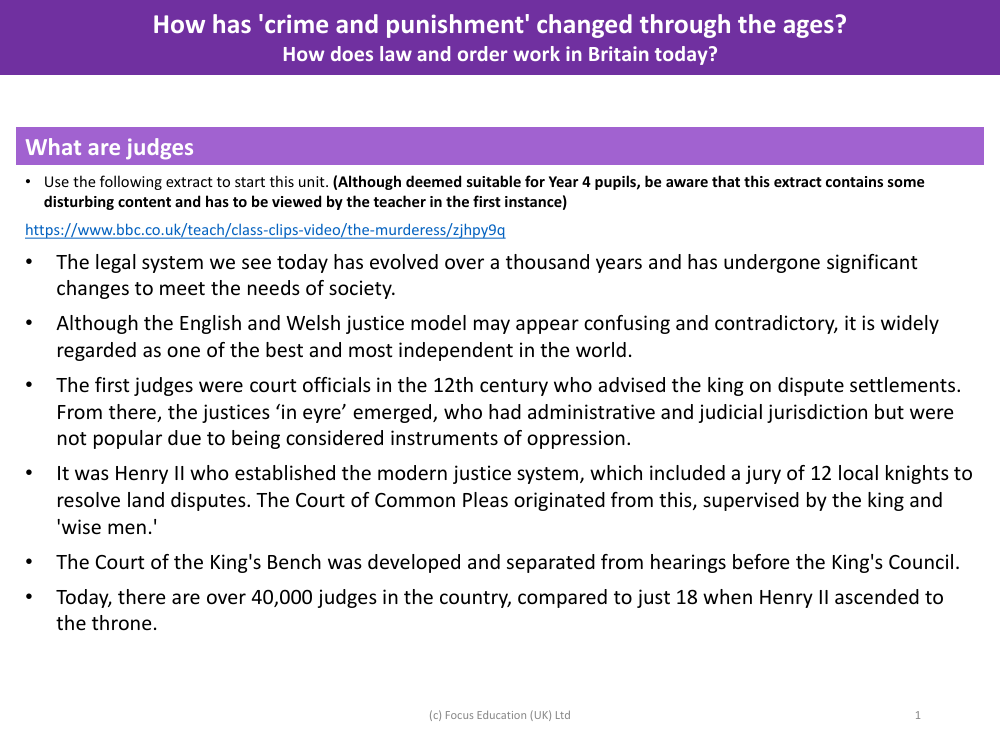Judges - Info Pack - Crime and Punishment - Year 5

History Resource Description
Judges play a crucial role in the English and Welsh legal system, which has been evolving for over a millennium to address societal needs. Initially, in the 12th century, judges were royal court officials who advised the king on resolving disputes. The justice system as we know it began with Henry II, who introduced a jury of 12 local knights to settle land disputes, leading to the formation of the Court of Common Pleas. Over time, the Court of the King's Bench emerged, separate from the King's Council. Today, the UK boasts over 40,000 judges, a significant increase from the mere 18 during Henry II's reign. The system they operate within is considered one of the best and most independent in the world, despite its complexities and occasional contradictions.
The tradition of judges and barristers wearing wigs in court is a practice that dates back to the 17th century, rooted in a royal court dress code established in the 14th century by King Edward III. Initially, lawyers were expected to be clean-shaven with short hair, but around 1680, wigs became part of their formal attire, popularised by King Charles II. Over time, the style of wigs changed, with the full-bottomed wigs of the 1780s giving way to the less formal bob wig for civil trials. By the 1840s, full-bottomed wigs were reserved for ceremonial use, while smaller wigs became the norm for daily court proceedings. These historical garments symbolise the long-standing traditions that underpin the UK's legal system and reflect the changes in 'crime and punishment' over the ages, as well as the evolution of law and order in Britain today.




